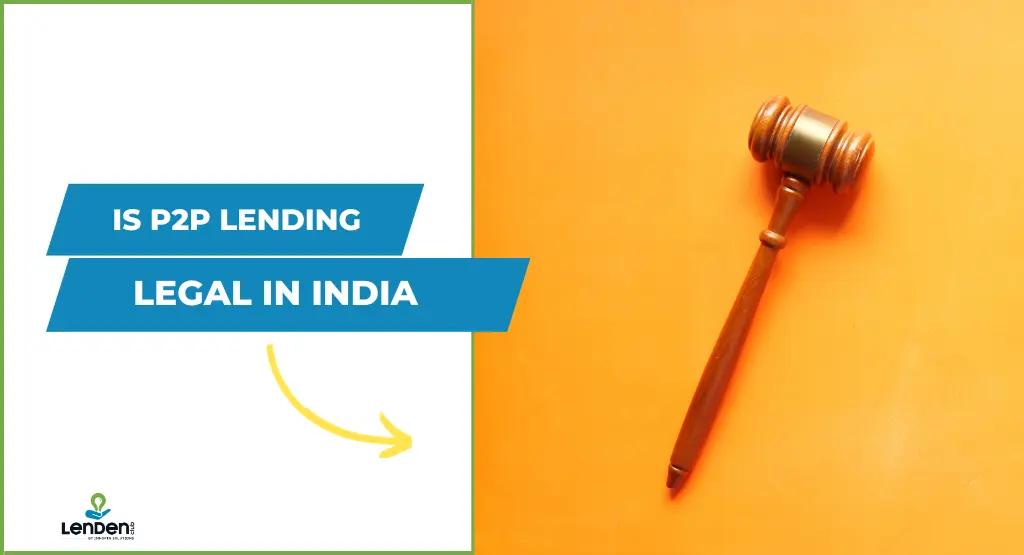Is P2P Lending Legal in India?

As P2P lending gains popularity in India, it becomes important that clear regulations are formulated to maintain proper transparency and protect lenders and borrowers. The Reserve Bank of India (RBI) has introduced guidelines for Non-Banking Financial Company-Peer-to-Peer (NBFC-P2P) lending platforms. The regulation marks a significant stride towards strengthening the P2P lending ecosystem, making it safer and more trustworthy.
In recent years, peer-to-peer (P2P) lending has become a popular financial instrument option in India, offering individuals the opportunity to lend money directly to borrowers without traditional banks or financial institutions and earn interest.
So, is Peer to Peer or P2P lending legal in India?
In short, yes. P2P lending is legal in India and regulated by the RBI under the master guidelines of Non-Banking Financial Company – Peer to Peer Lending (NBFC-P2P) guidelines.
RBI has regulated this budding sector, ensuring transparency so that it is safer for both borrower and lender.
Let’s look deeper into how the RBI is shaping P2P lending with the guidelines.
RBI’s Role in Regulating P2P Lending in India
The need for regulation arose with the evolution of P2P lending. RBI is in full realization of this and has laid out some specific guidelines for the operations of Non-Banking Financial Company-Peer-to-Peer (NBFC-P2P) lending platforms. Such regulations will help in a fair, transparent, and safe platform for all parties involved. Here’s how RBI ensures a safe landscape for P2P lending:
1. Prohibition on Credit Enhancement and Guarantees
P2P platforms are strictly not allowed to extend credit guarantees, and thus, the activity of LenDenClub as a platform would solely be that of an intermediary- a direct link between lenders and borrowers. Thus, in that sense, it avoids assuming credit risk associated with loans, thereby keeping it neutral.
2. Escrow Mechanism for Fund Transfers
All the transactions between a lender and a borrower are made through bank-operated escrow accounts, making sure transfers of all funds are transparent. This mechanism prevents any misuse of funds, safeguarding both parties in the transaction. Platforms like LenDenClub function strictly by this system for your money to always be handled securely.
3. Cross-Selling Restrictions
The RBI has restricted P2P platforms from cross-selling products unrelated to the core lending activity. However, cross-selling insurance directly related to loans is permitted to ensure that the business focuses on lending and does not engage in distracting or misleading activities.
4. Lending Caps to Protect Lenders
To safeguard lenders, the RBI has set limits on the total amount they can lend on P2P platforms. If lenders wish to lend over ₹10 lakh, they must provide a net-worth certificate. In turn, this does not allow over-exposure of lenders, and lenders operate within their financial capacity.
5. Transparency in Borrower Information
RBI regulations require P2P firms to report detailed borrower information, including risk and loan portfolio performance, such as the level of NPAs, to help lenders make informed decisions.
6. Platform Identity and RBI Compliance
To build trust, P2P platforms must clearly display their registered name and identify themselves as RBI-regulated entities. LenDenClub, as an RBI-regulated platform, complies with all these requirements, ensuring that users can trust the platform to operate within the framework of the law.
In conclusion, P2P lending is a game-changer in the financial sector, providing a compelling alternative for both borrowers and lenders. However, both must weigh the advantages and disadvantages carefully before making any financial commitments.
You can read the recent amendments that were made by the RBI on P2P Lending guidelines.